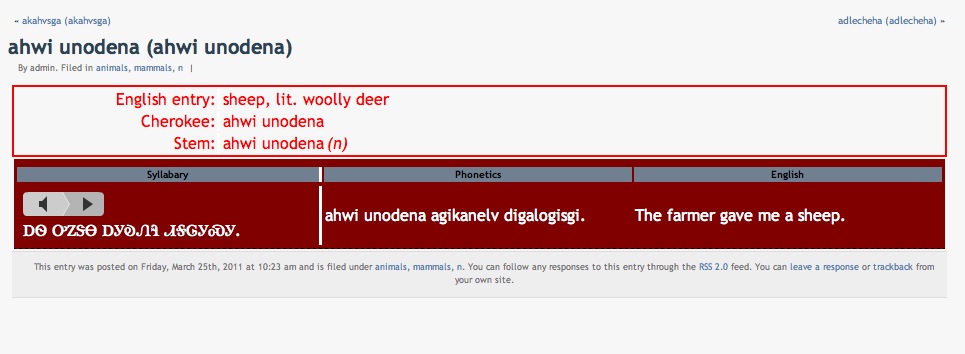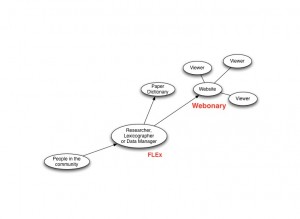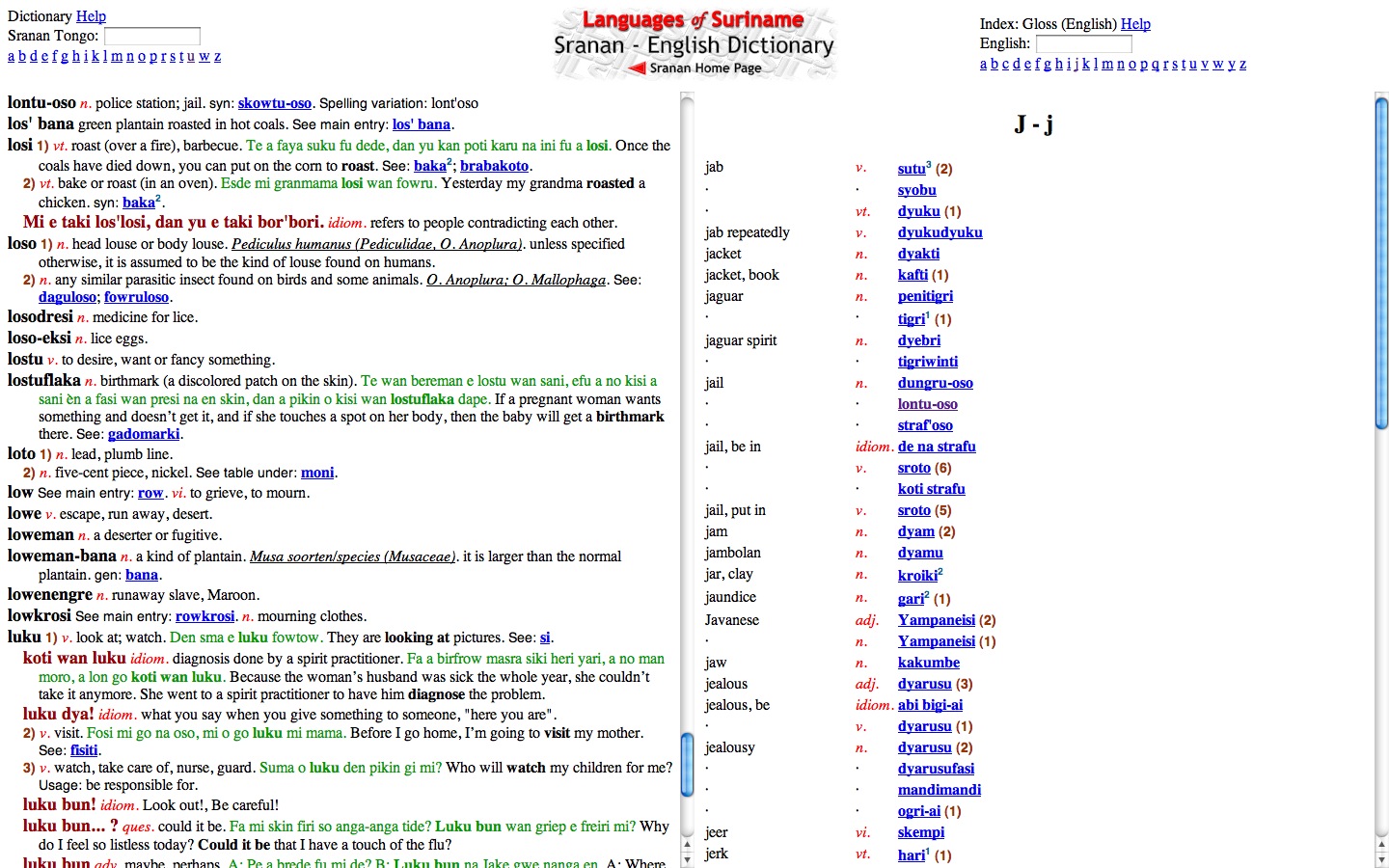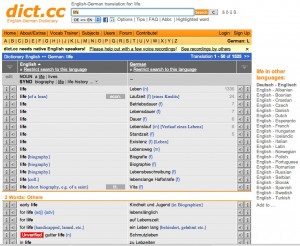Cloud Services
Cloud services are considered the rage in current business because they reinforce the relevance of a company to unique individual consumers of the service. As SIL looks to be more relevant to the people it serves, should SIL consider Cloud based services?
What is a cloud service? A cloud service is a data exchange service where a user interacts in some way with data or others. Some examples might include Google Maps, DropBox, Apple Maps, Flickr, Wikipedia, Gmail.
Does SIL already have cloud services? If so, share what you think they are in the comments.
The article at the link compare's Apple's business strategy as it was currently known to its entrance into new markets via cloud services. It then compare that with other cloud services offered by other companies. It is worth the read. At the end of the article I find myself asking: if SIL were to offer cloud services, can we learn from these mistakes that other companies have made? What might be our SWOT analysis for Cloud services?
From time to time interesting technology solutions crop up for server - poly client and cloud solutions. http://derbyjs.com/ is one of those solutions.
Reviewing Language Forge
Reviewing Language Depot
Reviewing Webonary
webonary as wordpress plugin
What it does
Competion
Related
webonary as platform product
What it does
Competion
Related
This post is a open draft! It was originally started on April 23, 2011. Almost two years later it makes it's public debut. It might be updated at any time... But was last updated on December 18, 2013 at 8:40 pm.
This post is a open draft! It might be updated at any time… But was last updated on December 18, 2013 at 8:40 pm.

In this reviewRegardless of the views expressed here in this review, it should be stated that I have high hopes for Webonary’s future. Some of the people working on Webonary are my colleagues so I attempt hedge my review with the understanding that this is not the final state of Webonary. I am excited that easy to use technology, like WordPress is being used, and that minority language groups around the world have the opportunity to use free software like webonary. I will be looking at the WordPress plugin, Webonary and several associated issues. I will be looking at:
- What a the user’s community of an online dictionary today might want to do with their dictionary data on the web and how Webonary fits into that paradigm.
- How would a dictionary consultant to a language community, or a language researcher interact with that the community building a dictionary on the web.
- The special SEO considerations for Webonary’s data.
- The ease of implementation to install and use Webonary.
- How the plugin is presented online.
- The technology of how it does what it does.
- How Webonary fits into current standards for both WordPress and for W3C recommendations.
_ TOC should be link able… can I make this page three column? http://wordpress.org/extend/plugins/hackadelic-table-of-content-boxes/
http://andybeard.eu/2305/anchor-sitelinks-table-of-contents-wordpress-1.html
Webonary what is it?

Webonary is a plugin for WordPress[ref 1] which will take and export of FLEx data and use WordPress as its database driven content management system for presenting dictionary data (terms, glosses, definitions, etc) on the web. It is a view only tool – in that it is not designed to enable communities to contribute to the dictionary project, only view the entries.
Some examples in the wild:
- Webonary Demo
- The Nousu-Yi-Chinese-English Glossary [ref 2] showcases Yi script and Chinese scripts working together with the Roman script for English.
- Cherokee Electronic Dictionary
The Cherokee Electronic Dictionary[ref 3] gives an example of what is possible with different fields. Cherokee entry for sheepCherokee entry for Sheep..
Cherokee entry for sheepCherokee entry for Sheep..
If you have Lexical Data in FLEx and want to port that data to the Web via a database driven website, Webonary is your tool.
What might a dictionary community today want to do with their dictionary data on the web and how Webonary fits into that paradigm.
Part of the challenge of writing this section is deciding what a dictionary community is. The other challenging part of this section is defining what is the paradigm for what a community might want to do with a dictionary. In working with communities (ethnolinguistic communities, speech communities, dialect communities, online communities etc.) the challenge is deciding who is part of the community and who is not. Part of shaping community involvement is also determining what role a person in “the community” has. For instance, are they:
- a reviewer – If they are can they review their own submissions?
- a contributor – If they are what level of contribution?
- an editor – If they are what aspect do they edit – photos and images used, definitions, bilingually equivalent terms?
The definitions of roles are related to workflows and numbers of participants in the project. That is to say, a dictionary project can have wide level of diversity in terms of contributors of terms, definitions, and related material, but a small editing team. This leads us to ask about a dictionary’s scope. That is, what is the editorial team going to try to accomplish for the community? Defining the scope of a dictionary is very important for two very important reasons:
- Project management.
- End product usability and distribution.
For the editorial community and the entire language use community, this minimally means determining what a completed dictionary entry looks like. A bilingual dictionary for print might have a term in L1, an equivalent term in L2, a definition or explanation, and a photograph. But the simple act of determining that these four parts of the entry are sufficient for this particular project is an editorial decision. If the language community is only 50 speakers and the editorial staff is 6 people then one might say that the dictionary is more closely connected with the speaker community than if the number of speakers is around 1,000,000 and the editorial staff was still about 6 people. In the smaller community there might be a lot more discussion about a particular term, but there are far fewer opinions. With a speaker community of 1 million, there can be a greater number of opinions. So if a web-based elicitation tool was provided then one would have to determine how the editorial team would handle all the input. This sort of challenge is a testimony to the need for several kinds of knowledge in the task of dictionary making:
- Knowledge about Theoretical Linguistics to understand the language being described and the categories possible in the dictionary.
- Knowledge about the language (and culture) being analyzed and described so that they can apply the appropriate options available to this situation.
- Knowledge about how to manage the editorial process for the dictionary (including entry submission).
- Knowledge about how to use the software to implement the editorial process.
By paradigm above I mostly mean the paradigm of the editorial team, but I do not mean that exclusively. To help us in our analysis of Webonary as a tool let us make some rational, but superficial assumptions about a dictionary and its editorial team.
- it is a polyglot work
- the dictionary community is the sum of all the people in the speech communities represented by the languages of in the work
- there is an editorial staff which is a subset of persons from the dictionary community
- the data in the dictionary is open data (re-mix, re-use sorts of licenses)
- the editorial team wants the dictionary data available to the dictionary community (and the rest of the world) on the web
Framing the question like: “How does Webonary fit into the dictionary creation, distribution, and use process?” with the prior discussion allows a more directed answer to the usefulness of Webonary. To adequately answer this question we need to look at the expectations of users, the solution as provided by Webonary, and other kinds of solutions in the same class of options (marketplace competitors).
The competition & The nitch
Given the data flow in the image below, there is no other tool for providing access to a database driven web interface, using FLEx as a data source. There is one other tool for providing web access to FLEx data, LexiquePro. However, LexiquePro
[ref 4] is not a database driven web solution.
Basic Relationship and flow of data with respect to FLEx and Webonary.This inherently puts Webonary in a class of products by itself. But Webonary also is unique in that it provides a search for term interface rather than a browse interface.
_insert screen shot of webonary

One possible layout with LexiquePro
[ref 5]
However, Webonary still needs to distinguish itself from other products in the dictionary sector of the web arena.
- Webonary does distinguish itself from other WordPress related products with dictionary like functions. There are several other plugins for WordPress which do have dictionary related purposes. But Webonary is the only one with a true post-is-an-entry functionality. At the time of this writing, I could only find one use of WordPress as a dictionary [ref 6] , where Webonary was not also used. So what are these other plugins?
Other WordPress Plugins
Name:
Associative Dictionary Widget
[ref 7]Where it can be found:
http://wordpress.org/extend/plugins/associative-dictionary-widgetWhat it does:
This widget adds a dictionary to your sidebar and displays words from it through ajax calls. All the words in the description are links themselves, so you can keep wandering through the words. If a word has no description, a small form is displayed to make one up. It is not meant to be useful, so it has no search. You can only hope visitors will come up with nice, sarcastic or cryptic descriptions.Name:
Free Dictionary Sidebar Widget
[ref 8]Where it can be found:
http://wordpress.org/extend/plugins/free-dictionaryWhat it does:
Free Dictionary Sidebar Widget for WordPress provides an English Dictionary that gives you English definitions, synonyms, pronunciation, spelling and more.
This plugin sources its data from Free Dictionary [dot] Org
[ref 9], a search aggregation from various lexical oriented web services (like Wordnet 3.0 [ref 10], The Collaborative International Dictionary of English v.0.48 [ref 11], and Moby Thesaurus II by Grady Ward, 1.0 [ref 12]).Name:
Explanatory Dictionary PluginWhere it can be found:
http://rubensargsyan.com/wordpress-plugin-explanatory-dictionaryWhat it does:
Name:
Where it can be found:
http://www.shamusyoung.com/twentysidedtale/?p=419What it does:
Name:
Langtolang Dictionary Sidebar Widget for WordPress
[ref 13]Where it can be found:
http://www.langtolang.com/external/wordpress/What it does:
Name:
Double Click Dictionary Look-upWhere it can be found:
http://wordpress.org/extend/plugins/double-click-dictionary-look-up/What it does:
Double click on the screen to highlight a word. This creates a qTip next to the word where when clicked, a pop-up will appear with the m-w.com’s definition on the word.Name:
PUT NAME HERE
[ref
14
]Where it can be found:
http://wordpress.org/extend/plugins/mowster-glossary/What it does:
Name:
PUT NAME HERE
[ref
14
]Where it can be found:
http://wordpress.org/extend/plugins/lexidef/What it does:
Name:
PUT NAME HERE
[ref
14
]Where it can be found:
http://www.langtolang.com/external/wordpress/What it does:
Name:
Where it can be found:
http://www.annedorko.com/blog/setting-up-wordpress-as-a-dictionary-siteWhat it does:
The online dictionary user’s expectations
Thinking through the place of dictionaries online.
- Explain a matrix of the usual features for dictionaries online.
- Give Examples of other kinds of context where online dictionaries are presented
- Give a Matrix of the other kinds of content which usually appear with the dictionaries.
- Give an example of Dictionary use by computer based apps. The example of OS X and Wikipedia.
Yurok dictionary
http://linguistics.berkeley.edu/~yurok/lexicon.php?style=query&writing=linguistic&lx-id=27&index=&yu=≥=&sd=30&rf=&pd=&ps=&mr=&quick-search=
English Dictionaries
http://www.freedictionary.org/?Query=life&button=Search[ref 15]
[[http://en.wiktionary.org/wiki/life\[ref\]\(http://en.wiktionary.org/wiki/life\[ref](http://en.wiktionary.org/wiki/life[ref]\(http://en.wiktionary.org/wiki/life[ref)\) 15]
[[http://www.urbandictionary.com/define.php?term=life\[ref\]\(http://www.urbandictionary.com/define.php?term=life\[ref](http://www.urbandictionary.com/define.php?term=life[ref]\(http://www.urbandictionary.com/define.php?term=life[ref)\) 15]
Bilingual Dictionaries German-English
Dict.cc
[ref 15]
http://www.dict.cc/?s=life
Dict.cc - Perhaps the Best Bi-lingual Online dictionary example I have seen to date.
Leo
[ref 15]
http://dict.leo.org/ende?lp=ende⟨=de&searchLoc=0&cmpType=relaxed§Hdr=on&spellToler=&search=life
Leo another popular German-English Dictionary
Taglog
http://mylanguages.org/tagalog_dictionary_en.php?[ref 15]
Ilokono
http://www.toidp.com/search/?s=life&l=eng
http://www.bansa.org/dictionaries/bhk/?dict_lang=bhk&type=search&data=life
Talking Dictionary of Khinina-ang Bontok
[ref 16]
http://htq.minpaku.ac.jp/databases/bontok/search.jsp
Talking Dictionary of Khinina-ang Bontok
How would a dictionary consultant to a language community, or a language researcher interact with that the community building a dictionary on the web.
- Diagram how Webonary works or is updated.
- Explain the diagram.
(Somewhere I need to explain about considering the dictionaries audience)
Explain that some forms of lexicography are based on amassing a corpus and then extracting the lexical items from that corpus. This often shows the senses of the words and provides examples. Without helping the community to amass a corpus in language documentation process a lexicographer is really selling them short.
Cite:
A. http://oxforddictionaries.com/page/oecdictionaryentry
B. http://digitalhumanities.org/dhq/vol/003/1/000023/000023.html
- Explain the bit about the fields in FLEx
- Explain about Setting up dictionaries
- Use my diagram and talk about types of entires.
B. http://www.espanol-ingles.com.mx/dictionary/english-spanish/
E.
Field of Relevance
Level of Formality
http://www.uhv.edu/ac/study/pdf/dictionary.entries.pdf
F. connotations
denotations
usage information
http://www.uncp.edu/home/canada/work/markport/best/diction.htm
G. Characters and Stroke count http://www.jishop-software.com/version3.html
H. Prescription and description http://en.wikipedia.org/wiki/Dictionary
Address the complexity of a bilingual dictionary:
A. Composition of the Entry in a Bilingual Dictionary http://www.pulib.sk/skase/Volumes/JTL04/05.pdf
B. Which Microstructural Features of Bilingual Dictionaries Affect Users’ Look‐Up Performance? http://ijl.oxfordjournals.org/content/15/2/119.short
C. http://www.tandfonline.com/doi/abs/10.1080/07908318.2010.510196 Bilingualised or monolingual
dictionaries? Preferences and practices of advanced ESL learners in Hong Kong
D. Translation Students’ Use of Dictionaries: A Hong Kong Case Study for Chinese to English Translation. http://www.asian-efl-journal.com/Thesis/Thesis-Wai-on-Law.pdf
E. digitizing Dictionaries for Advanced Look-up and Lexical Knowledge Research in Malay. http://www.mendeley.com/research/digitising-dictionaries-advanced-lookup-lexical-knowledge-research-malay-1/
How the plugin is presented online.
Accessing Webonary
Website
Themes
plugin
Support
Some suggestions
Use WordPress.org/extend for:
hosting
update pushing
Themes + Plugins
Use Child themes rather than full themes
Make some widgets for displaying content in various ways.
Export to Lift format.
Advertise through OLAC
Deploying Webonary
Is it a turn-key solution?
http://pathway.sil.org/webonary/dictionary-software/
(Answer the question “Is webonary a standalone product?”)
Using Webonary
Managing Webonary data
(It does not delete the categories that it should when it deleted the plugin’s data.)
First I downloaded the themes from:
- 2.
and ran them through: http://wordpress.org/extend/plugins/theme-check/
This was the result:_____
More about that: http://codex.wordpress.org/Theme_Unit_Test
Suggestion using child Themes: http://codex.wordpress.org/Child_Themes
Suggest implementing auto update feature: http://markjaquith.wordpress.com/2009/12/14/excluding-your-plugin-or-theme-from-update-checks/
Hosting if self hosting
from github:http://wordpress.org/extend/plugins/wordhub/
If not self hosting:
http://txfx.net/wordpress-plugins/i-make-plugins/
Plugin into extend
Menu wording of items hresipe,
Some more examples of online dictionaries.
http://talkingdictionary.swarthmore.edu/
Looking ahead to Linked data:
http://www.semanticfocus.com/blog/entry/title/microformats-vs-rdf-how-microformats-relate-to-the-semantic-web
http://manu.sporny.org/2011/uber-comparison-rdfa-md-uf/
http://ufxtract.com/
http://code.google.com/p/xmfp/wiki/MicroformatDefinitions
http://www.pfed.info/wksite/
http://matapuna.thinktank.co.nz/matapuna/
http://www.ldc.upenn.edu/exploration/expl2000/papers/whalen1/whalen1.htm
http://interglacial.com/~sburke/ma/
http://www-nlp.stanford.edu/kirrkirr/
http://www.mpi.nl/lrec/2002/papers/lrec-pap-07-Dictionary_Endangered_SpComm.pdf
http://wordpress.org/extend/plugins/multiple-approvals/
http://okfn.org/
http://dictionary.k12opened.com/index.php?p=modify&w=history
http://sourceforge.net/projects/xdxf/
http://ckan.org/
Bibliography
- Automatic. 2011. WordPress version 3.2.1. Web CMS available at http://www.WordPress.org/ [Accessed: 13 November 2011] [Link]

- Various Contributors. 1 Feb 2011. Nousu-Yi-Chinese-English Glossary. Editors: Dennis Walters, Susan G., and Ma Linying. SIL International and Southwest University for Nationalities. http://www.yihanyingcihui.net/. [Accessed: 25 September 2011] [Link]

- Various Contributors. Date. The Cherokee Electronic Dictionary. Cherokee Nation Education Corporation. Editors: http://www.cherokeenationfoundation.org/dictionary/. [Accessed: 25 September 2011] [
Link
]

- SIL International. 2011. LexiquePro version 3.4.2. Computer program available at http://www.lexiquepro.com/ [Accessed: 13 November 2011] [
Link
]

- SIL International. 2007. Suranan – English Dictionary. http://www.sil.org/americas/suriname/Sranan/English/SrananEngDictIndex.html [Accessed: 13 November 2011] [
Link
]

- Anne Dorko. 8 October 2009. Setting up WordPress as a dictionary site. http://www.annedorko.com/blog/setting-up-wordpress-as-a-dictionary-site [Accessed: 25 September 2011] [
Link
]

- Jeroen Smeets. 8 April 2008. Associative Dictionary Widget version 1.2.3. http://jeroensmeets.net/wordpress/associative-dictionary/ [Accessed: 13 November 2011] [
Link
] [
WP-Extend
]

- Free Dictionary. 10 March 2009. Free Dictionary Sidebar Widget for WordPress. http://www.freedictionary.org/external/wordpress/ [Accessed: 13 November 2011] [
Link
]

- Free Dictionary Project. 2011. Free Dictionary. http://www.freedictionary.org/ [Accessed: 13 November 2011] [
Link
]

- Princeton University. 2010. WordNet 3.0. Princeton University “About WordNet”. http://wordnet.princeton.edu [Accessed: 13 November 2011] [
Link
]

- CIDE. 2002. The Collaborative International Dictionary of English version 0.48 [
Wiki
]

- Grady Ward. 2001. Moby Thesaurus II 1st edn. http://icon.shef.ac.uk/Moby/ [Accessed: 13 November 2011] [
Link
] [
Wiki
]

- From Language to Language. 9 March 2009. Langtolang Dictionary Sidebar Widget for WordPress. http://www.langtolang.com/external/wordpress/ [Accessed: 13 November 2011] [Link]

- Author. Date. Full name of plugin. Link to external website [Accessed: 13 November 2011] [Link]



- Author. Date. Full name of plugin. Link to external website [Accessed: 25 September 2011] [Link]






- Author. Date. Talking Dictionary of Khinina-ang Bontok. Link to external website [Accessed: 25 September 2011] [Link]



